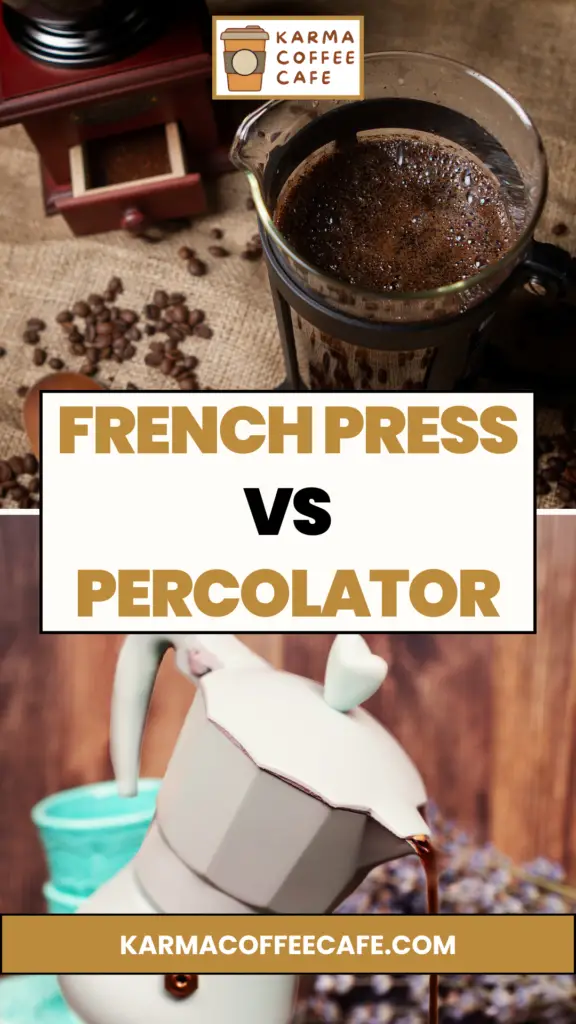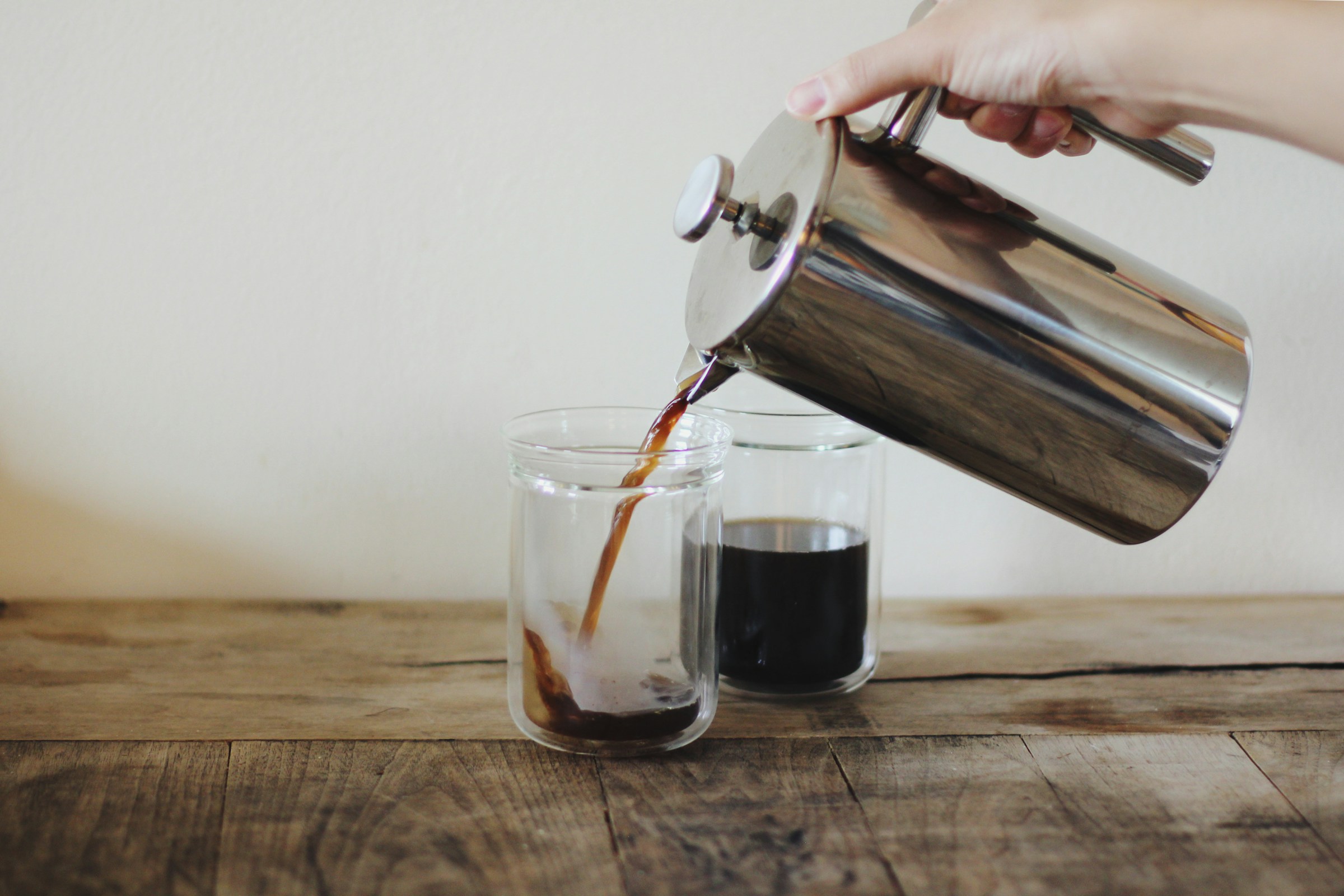Choosing the right coffee brewing method can be a game-changer for your daily cup of joe.
Two popular options are the French press and the percolator.
Each offers a unique way to brew, impacting flavor, strength, and convenience.
Whether you prefer a rich, full-bodied coffee or need to brew large quantities for a crowd, understanding these methods can help you decide.
Let’s dive into the details of both and find out which one suits your coffee needs best.
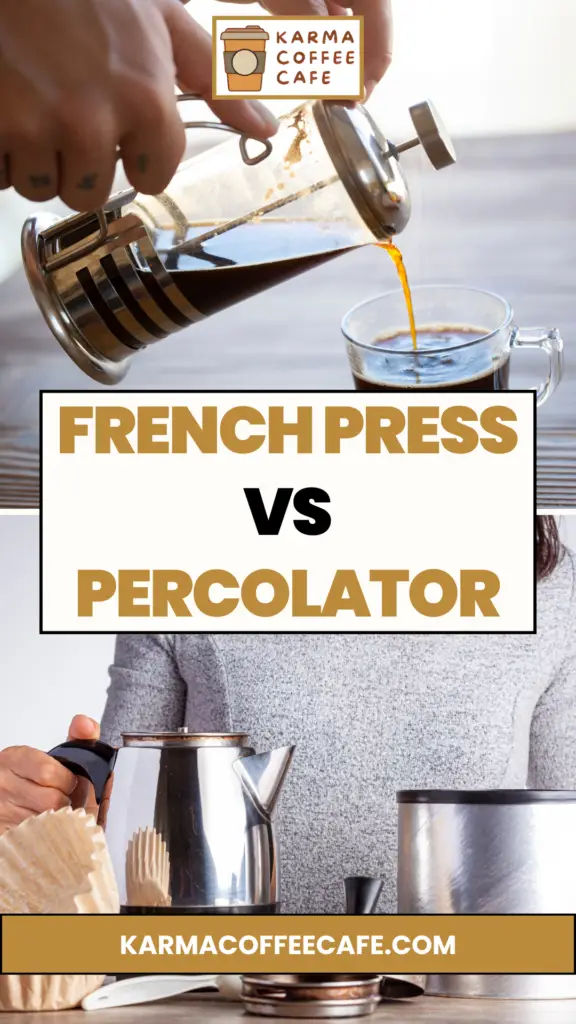
| Feature | French Press | Percolator |
|---|---|---|
| Flavor Profile | Rich, full-bodied, complex | Strong, bold, sometimes bitter |
| Brewing Process | Simple immersion, 3-5 minutes | Continuous percolation, 5-10 minutes |
| Ease of Use | Easy to use and clean | Requires monitoring, more cleaning effort |
| Portability | Highly portable, ideal for travel/camping | Durable, suitable for outdoor activities |
| Batch Size | Ideal for small batches (1-4 cups) | Suitable for large batches (up to 12 cups) |
| Strength and Caffeine | Controlled extraction, stronger coffee | Potential for over-extraction, strong coffee |
| Cost | Varies from budget-friendly to high-end | Stovetop models are affordable, electric more expensive |
| Durability | Glass (fragile), stainless steel (durable) | Stainless steel (highly durable) |
| Maintenance | Easy to clean, minimal maintenance | More cleaning required, regular maintenance |
| Electricity Required | No | Yes for electric models, no for stovetop |
What is a French Press?
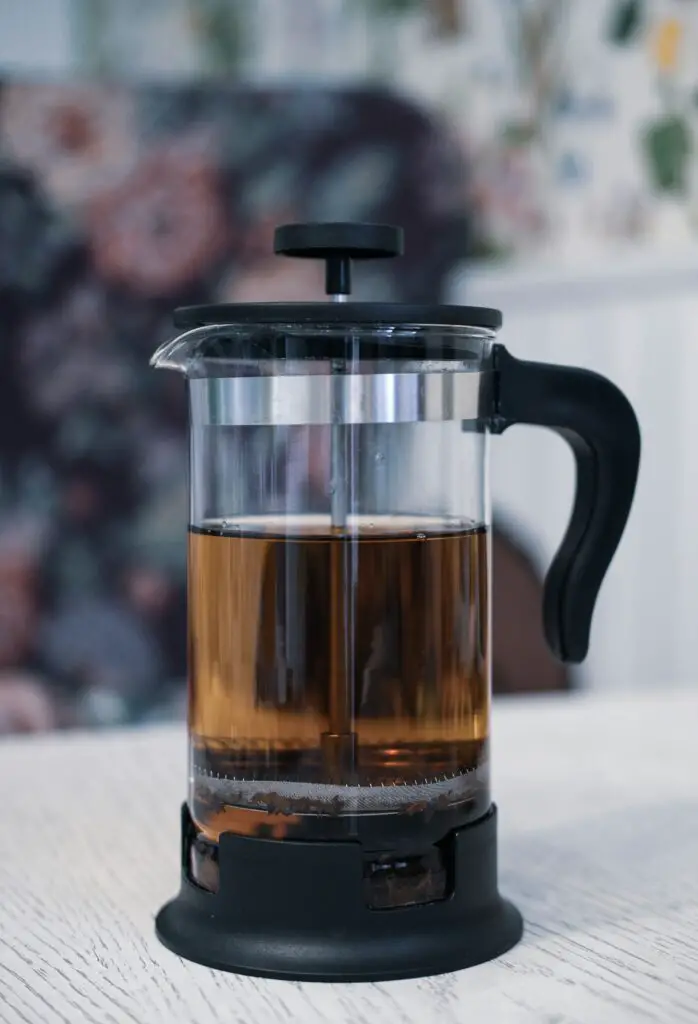
A French press is a simple yet effective coffee brewing device.
It consists of three main components: a carafe, a plunger, and a mesh filter.
The carafe is typically a cylindrical container that holds the coffee and water.
The plunger, attached to a lid, has a metal or plastic handle.
At the bottom of the plunger, you’ll find a mesh filter that separates the coffee grounds from the brewed coffee when pressed down.
The French press uses an immersion brewing method.
This means the coffee grounds are fully immersed in hot water for a certain period.
To brew coffee with a French press, you start by adding coarsely ground coffee to the carafe.
Then, you pour hot water over the grounds and let it steep for about 3-5 minutes.
Once the brewing time is up, you press the plunger down slowly.
The mesh filter pushes the grounds to the bottom, leaving the brewed coffee on top, ready to pour.
French presses come in various materials.
The most common type is made of glass, which allows you to see the brewing process.
Stainless steel French presses are durable and retain heat well, making them ideal for outdoor use.
Plastic models are lightweight and less prone to breaking, perfect for travel.
Copper French presses offer a stylish and durable option, though they tend to be more expensive.
What is a Percolator?
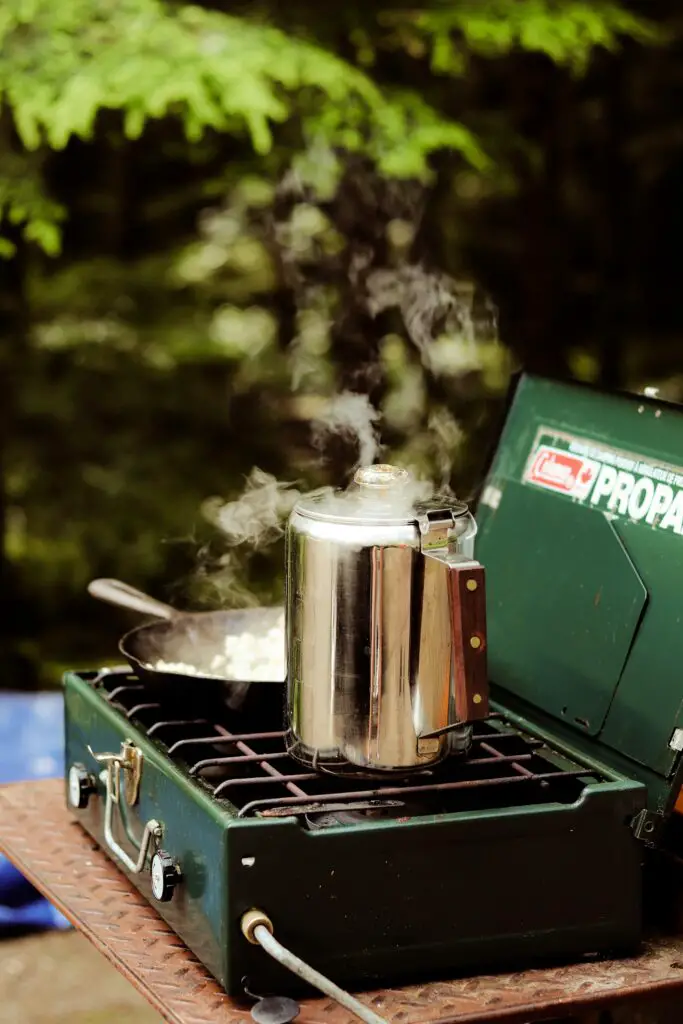
A percolator is a classic coffee brewing device known for its ability to make large quantities of coffee.
It has three main components: a basket, a tube, and a chamber.
The basket holds the coffee grounds, the tube allows water to circulate, and the chamber collects the brewed coffee.
The percolation brewing method involves continuously cycling hot water through the coffee grounds.
Water is heated at the bottom of the percolator and forced up through the tube.
It then spreads over the coffee grounds in the basket, extracting flavor as it drips back down.
This cycle repeats until the desired coffee strength is reached.
There are two main types of percolators: stovetop and electric.
Stovetop percolators are simple and portable, making them ideal for camping and outdoor use.
They work on any heat source, like a campfire or stove.
Electric percolators, on the other hand, plug into an outlet and often come with automatic features like a “keep warm” mode.
This makes them convenient for home use but less portable than their stovetop counterparts.
Brewing Process and Time
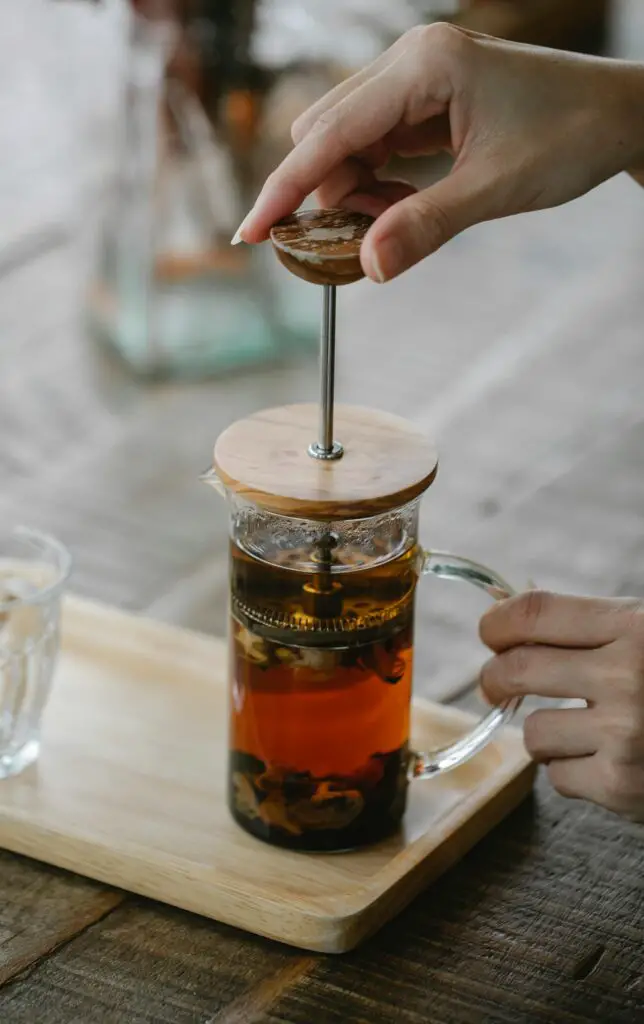
Brewing coffee with a French press is straightforward and quick.
Here are the detailed steps:
- Heat Water: Begin by boiling water in a separate kettle.
- Add Coffee Grounds: Place coarsely ground coffee into the carafe. A standard ratio is one ounce (about two tablespoons) of coffee for every four ounces of water.
- Pour Water: Pour the hot water over the coffee grounds. Ensure all grounds are fully immersed.
- Stir: Stir the mixture gently to ensure even extraction.
- Steep: Place the lid on the carafe with the plunger pulled up. Let the coffee steep for 3-5 minutes, depending on your taste preference.
- Press: Slowly press the plunger down to separate the grounds from the brewed coffee.
- Serve: Pour the coffee into your cup and enjoy.
Brewing with a percolator involves a few more steps:
- Prepare the Percolator: Fill the bottom chamber with cold water. The amount depends on how much coffee you want to make.
- Add Coffee Grounds: Place finely ground coffee into the basket. Use about one tablespoon of coffee per cup of water.
- Assemble: Put the basket and tube in place inside the percolator.
- Heat: If using a stovetop percolator, place it on the heat source. For electric percolators, plug it in and turn it on.
- Brew: Allow the water to heat and circulate through the coffee grounds. This process typically takes 5-10 minutes, depending on the desired coffee strength.
- Monitor: Keep an eye on the brewing process to prevent over-extraction, which can lead to a bitter taste.
- Serve: Once the brewing is complete, carefully pour the coffee into your cup.
Comparison of Brewing Times
The French press is relatively quick, taking about 3-5 minutes to brew.
This makes it a great option for those who want a speedy yet flavorful cup of coffee.
On the other hand, the percolator takes a bit longer, ranging from 5-10 minutes, depending on how strong you like your coffee.
While the percolator requires a bit more time and attention, it excels at brewing large quantities, making it perfect for serving a crowd.
Flavor and Aroma

The French press is celebrated for its rich and full-bodied coffee.
The lack of a paper filter allows the natural oils and fine particles from the coffee grounds to pass through, enhancing the complexity and depth of flavor.
This results in a robust cup with a heavy mouthfeel, often highlighting the darker roast profiles and complex flavors like chocolate, nuts, and spices.
Percolator coffee, on the other hand, is known for its strong and bold taste.
The repeated cycling of water through the grounds intensifies the brew.
However, this method can sometimes lead to over-extraction, which can result in a bitter flavor.
The strength of percolator coffee is appealing to those who prefer a more intense coffee experience, but it may lack the nuanced flavors found in French press coffee.
Several factors influence the flavor of both French press and percolator coffee:
Grind Size
- For French press, coarse grounds are essential. They prevent clogging of the mesh filter and ensure a cleaner cup with less sediment.
- Percolators work best with a medium to coarse grind. Finer grounds can pass through the basket, leading to a sludgy brew and potential over-extraction.
Steeping Time
- In a French press, the coffee grounds steep in hot water for about 3-5 minutes. This controlled steeping time allows for precise flavor extraction, avoiding bitterness.
- Percolator brewing time varies from 5-10 minutes. The longer the water cycles through the grounds, the stronger the coffee becomes. However, too long can lead to an overly bitter taste.
Water Temperature
- For both methods, water temperature is crucial. The ideal range is between 195°F and 205°F. Water that’s too hot can scald the coffee grounds, resulting in a burnt flavor, while water that’s too cool may not extract enough flavor.
- In a French press, you manually control the water temperature before adding it to the grounds.
- In a percolator, the water heats to boiling, which can sometimes exceed the optimal brewing temperature, contributing to bitterness.
Ease of Use and Convenience
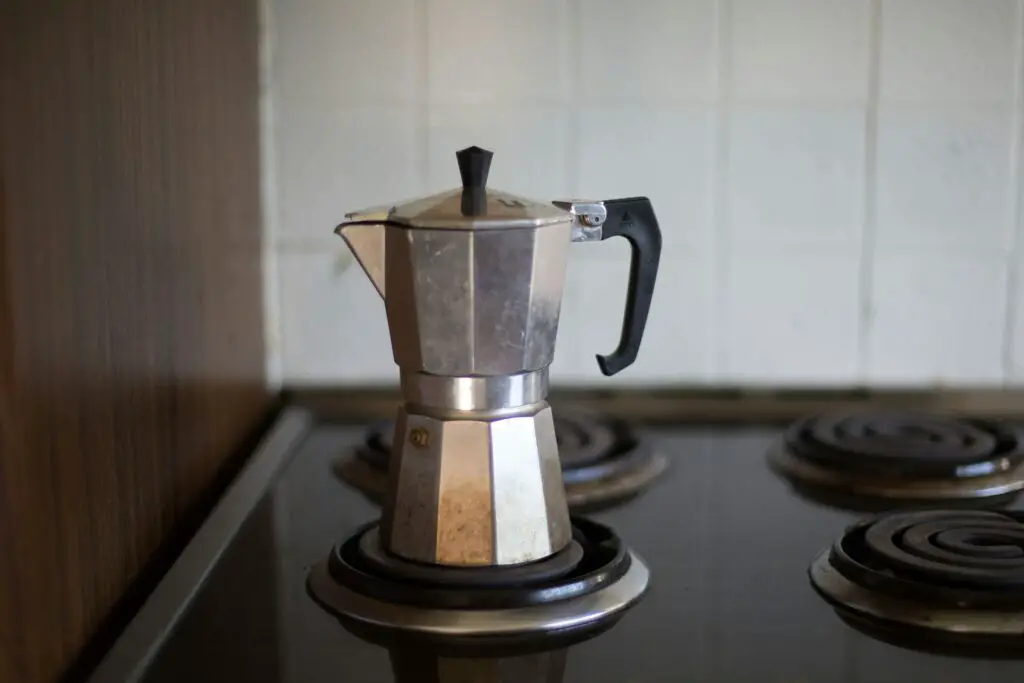
Using a French press is straightforward and beginner-friendly.
It involves adding coarsely ground coffee to the carafe, pouring in hot water, letting it steep for a few minutes, and then pressing down the plunger to separate the grounds from the coffee.
This simple process makes it easy for anyone to use, even without prior experience.
The percolator, while also relatively simple, requires more attention during the brewing process.
You need to monitor the coffee as it brews to avoid over-extraction, which can lead to bitterness.
The setup involves placing coffee grounds in the basket, adding water to the chamber, and heating until the desired strength is achieved.
This extra step can be a bit more cumbersome compared to the French press.
When it comes to portability and suitability for travel, the French press has its advantages and disadvantages.
French presses are compact and lightweight, making them easy to pack for trips.
However, they are often made of glass, which can be fragile and require careful handling.
On the other hand, percolators, especially stovetop models, are typically made of durable stainless steel, making them ideal for camping and outdoor use.
They can withstand rough handling and do not require a separate kettle to boil water, adding to their convenience.
Cleaning and maintenance are also important considerations.
A French press is easy to clean due to its simple design.
You can disassemble it quickly, rinse the components, and wash them with a sponge.
In contrast, cleaning a percolator is a bit more involved.
The tube and basket require thorough cleaning to prevent coffee residue buildup, and tools like a pipe cleaner may be necessary to clean the narrow tube.
This makes the percolator slightly more demanding in terms of maintenance.
Quantity and Batch Brewing
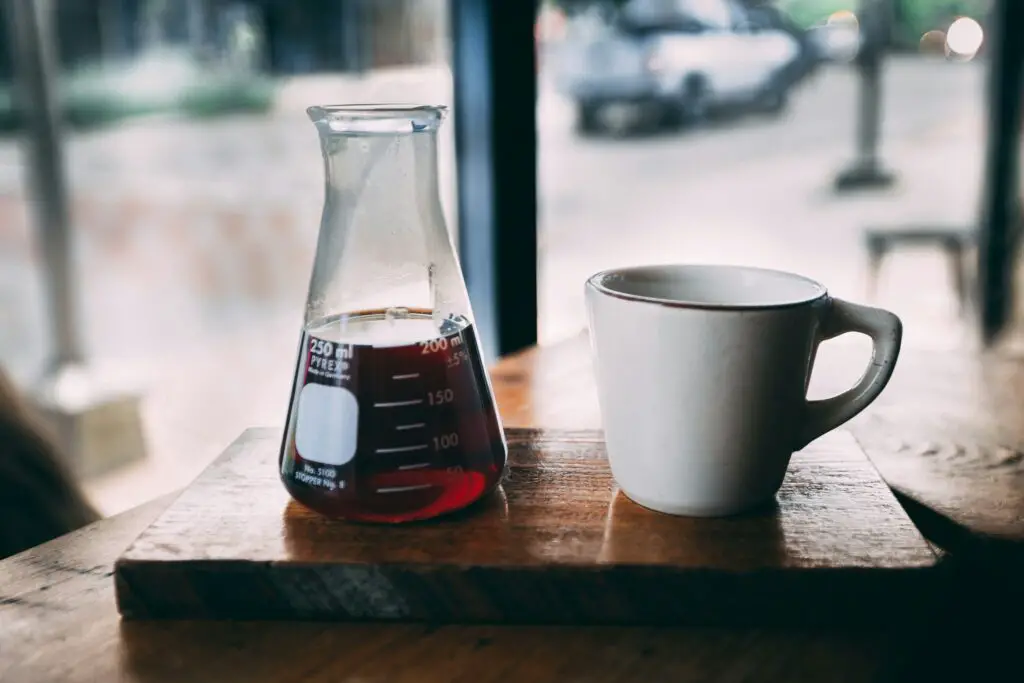
The French press is perfect for brewing small batches of coffee.
It typically makes between one and four cups at a time, which is ideal for personal use or a small group.
If you’re brewing coffee just for yourself or a couple of friends, the French press is efficient and easy to manage.
It allows you to make just the right amount without any waste.
On the other hand, the percolator is designed for brewing large batches of coffee.
It can produce up to 12 cups or more in one go, making it suitable for group gatherings or family breakfasts.
This capacity makes it a favorite for events where a lot of coffee is needed quickly, such as meetings, parties, or camping trips with a group.
Each method has its ideal use cases.
The French press excels in situations where you need a small, quick brew with minimal fuss.
It’s great for solo brewing or a quiet coffee session with a friend.
The ease of use and the ability to control the strength of each batch make it versatile for personal preferences.
In contrast, the percolator shines in settings that require a large volume of coffee.
It’s highly effective for group settings, where serving many people at once is necessary.
Its ability to keep coffee warm for longer periods also adds to its convenience in such scenarios.
Strength and Caffeine Content
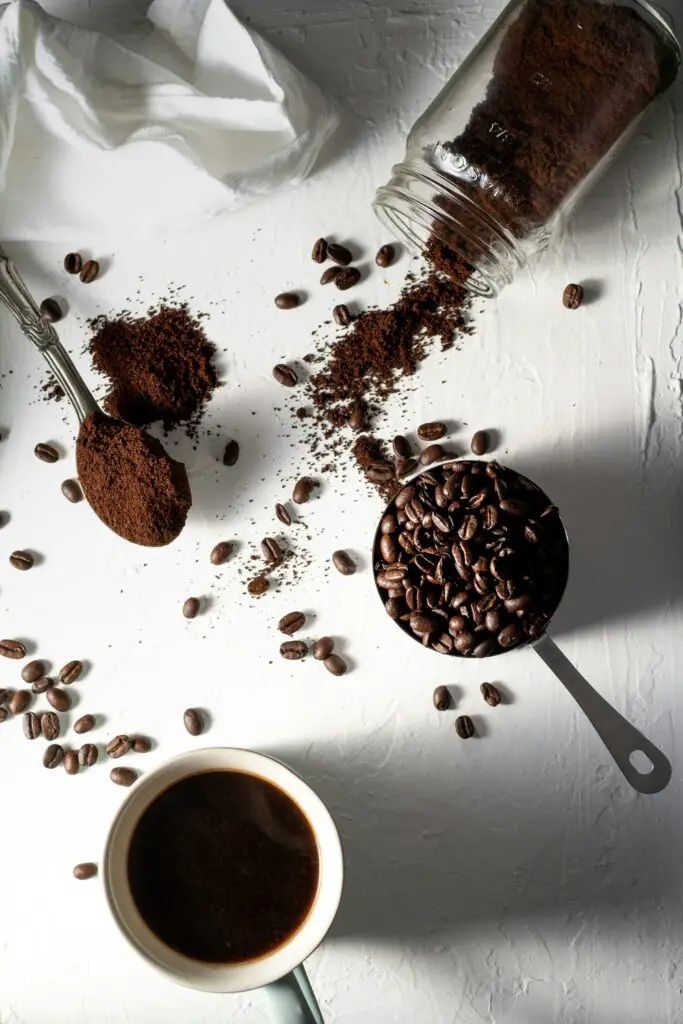
When it comes to coffee strength and caffeine content, both the French press and percolator offer distinct experiences.
The French press is known for producing a robust and full-bodied brew.
This method allows for efficient extraction of flavors and oils from the coffee grounds due to the direct contact between water and coffee during the steeping process.
Typically, French press coffee has a higher caffeine content, but this can vary based on factors like grind size and steeping time.
In contrast, the percolator is known for its ability to brew a strong, bold coffee.
This method continuously cycles boiling water through the coffee grounds, which can lead to potential over-extraction.
Over-extraction can result in a more bitter flavor profile and lower caffeine content.
Cost and Durability
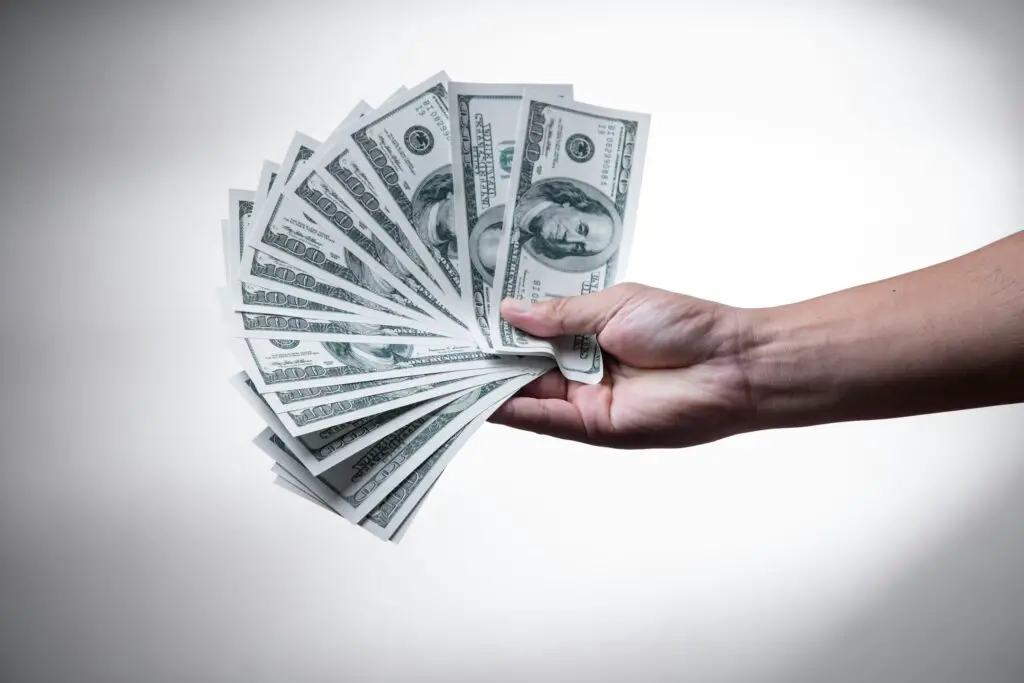
Generally, French presses are available in a wide range of prices, from budget-friendly options to high-end models.
Basic glass French presses are typically less expensive but can be prone to breakage.
On the other hand, stainless steel French presses are more durable and can withstand frequent use but come at a higher price.
Plastic French presses are lightweight and shatter-resistant, making them a practical choice for travel or camping, although they might not last as long as metal ones.
Percolators also vary in cost, with stovetop models often being less expensive than electric ones.
Stovetop percolators made from stainless steel are quite durable and can last many years with proper care.
Electric percolators tend to be pricier due to their additional features and convenience.
Percolators made from stainless steel are known for their longevity and can endure high temperatures and rough use.
Electric percolators, while convenient, include electronic components that may require more careful handling and can be prone to malfunction over time.
Regular maintenance, such as descaling and replacing worn-out parts, is essential to keep an electric percolator functioning well.
Long-term maintenance and replacement considerations are essential for both brewing methods.
French presses are generally straightforward to clean, with most parts being dishwasher safe.
Replacement parts like mesh filters and plungers are easily available and inexpensive.
Percolators, especially electric ones, may require more specific maintenance, including periodic cleaning of the heating element and replacement of worn-out components like cords or plugs.
French Press: Pros and Cons
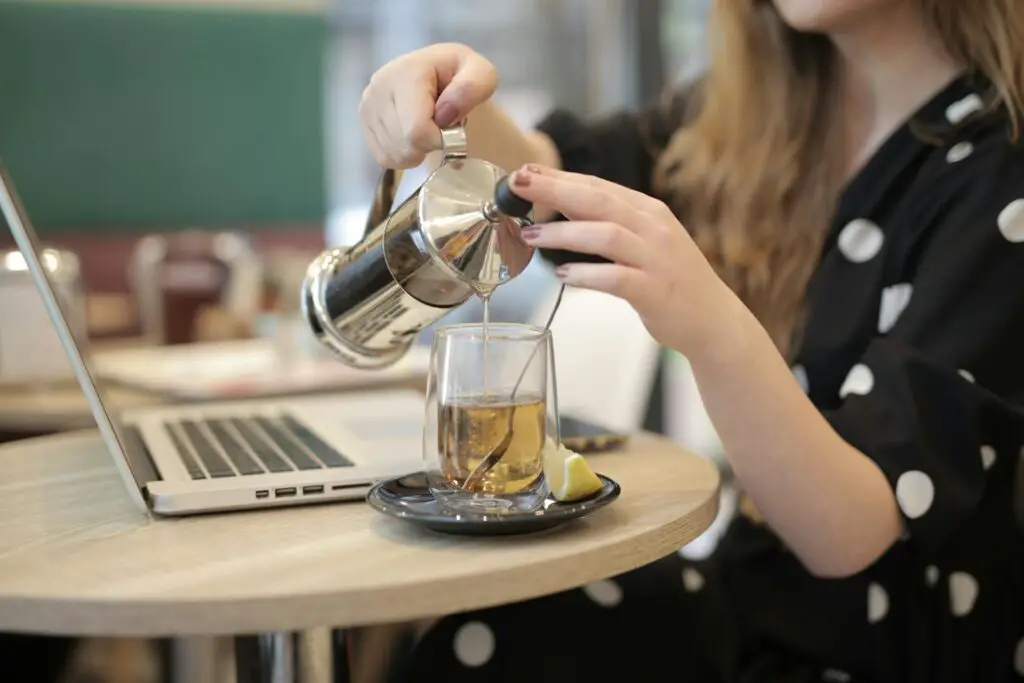
Pros
- Rich Flavor: The French press produces a full-bodied, rich coffee. The lack of a paper filter allows the natural oils and fine particles to enhance the flavor, giving a more robust taste.
- Control Over Brewing: You have control over the brewing time, water temperature, and coffee-to-water ratio. This customization helps in achieving the perfect cup according to your taste preferences.
- Simple to Use: The process is straightforward. Add coffee grounds, pour hot water, steep, and press. It’s easy to get consistent results with minimal effort.
- No Electricity Needed: A French press doesn’t require electricity, making it ideal for travel or camping.
- Easy to Clean: The French press is easy to disassemble and clean. Most parts are dishwasher safe.
Cons
- Fragility: Glass French presses are fragile and can break easily. They require careful handling.
- Limited Capacity: French presses typically brew small batches, usually between 1-4 cups. This might not be suitable for larger groups.
- Sediment in Coffee: The metal mesh filter doesn’t catch all fine coffee particles, which can leave sediment in the bottom of your cup.
- Requires Separate Kettle: You need a separate kettle to boil water, adding an extra step to the brewing process.
Percolator: Pros and Cons
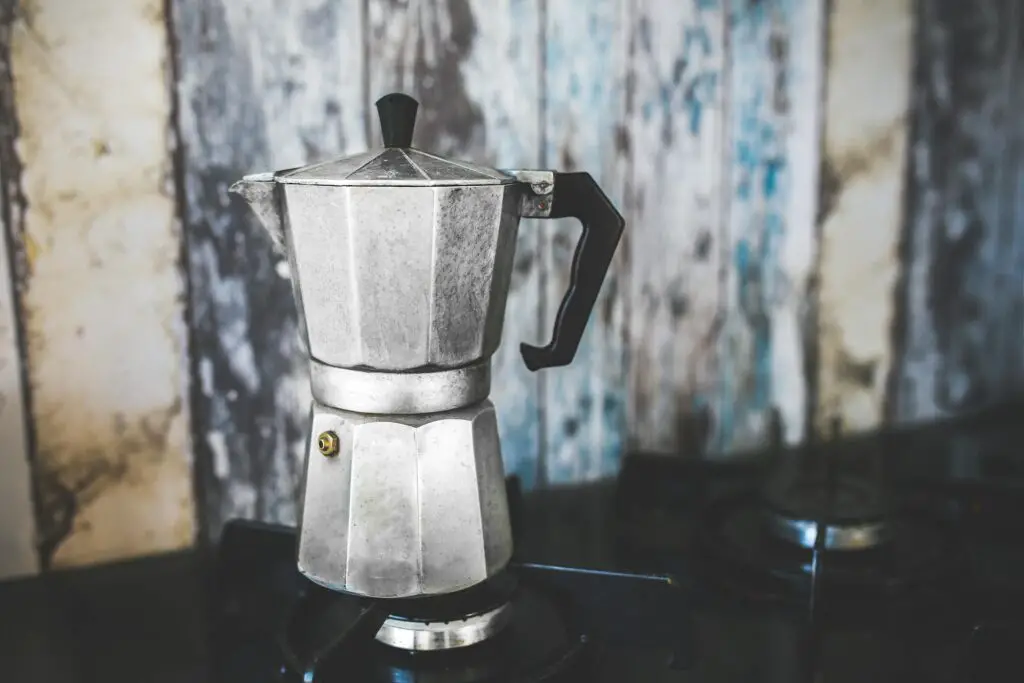
Pros
- Large Capacity: Percolators can brew large quantities of coffee, making them ideal for group gatherings or events.
- Durability: Stainless steel percolators are highly durable and can withstand rough handling, making them suitable for outdoor activities.
- No Need for Separate Kettle: Percolators heat water as part of the brewing process, eliminating the need for a separate kettle.
- Simple to Use: Despite needing some attention during brewing, percolators are relatively easy to use, especially the electric models with automatic features.
Cons
- Potential for Over-Extraction: The continuous cycling of water through the grounds can lead to over-extraction, resulting in a bitter taste.
- Requires Monitoring: Stovetop percolators need careful monitoring to avoid over-brewing. This can be a bit cumbersome compared to the set-it-and-forget-it nature of other methods.
- Cleaning Complexity: Cleaning a percolator, especially the tube and basket, can be more challenging and time-consuming compared to a French press.
- Less Flavor Nuance: The repeated brewing process can result in a less nuanced flavor profile, making the coffee taste stronger but not as complex as that brewed in a French press.
Verdict: French Press vs. Percolator
Choose a French Press if
- You prefer rich, full-bodied coffee with a complex flavor profile.
- You want control over the brewing process, including time and temperature.
- You typically brew small batches (1-4 cups) and value ease of use and cleaning.
- You need a portable brewing method that doesn’t require electricity, making it ideal for travel and camping.
Choose a Percolator if
- You enjoy strong, bold coffee and often need to brew large quantities.
- You prioritize durability and need a coffee maker suitable for group gatherings or outdoor activities.
- You prefer a straightforward brewing method and don’t mind monitoring the process to avoid over-extraction.
- You appreciate the convenience of a device that can brew and keep coffee warm, especially in its electric form.
